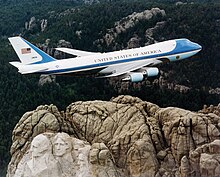History of air-to-air photography
Air-to-air photography which gained a remarkable popularity in the 20th century.However ,its roots trace back even further, drawing from earlier experiment with capturing views from the air.Before airplanes, people tried to get aerial perspectives in different ways, like using balloons or tall structures to get a view from above.To go over and over it combines the art of photography with the science of flight, getting images of aircraft in the air from another airborne platform. This kind of photography is not only about technical skills of taking pictures under challenging conditions but also involves an understanding of the historical and cultural significance of seeing the world from above. [1]
The ‘God-Eye’ perspective which is deeply embedded in human cognition, with its inception with ballon-assisted photographing in the 19th century to the complicated digital pictures technique of the modern times have had a lot of significant impact on the development of air-to-air photography.
Modern air-to-air photography uses different technologies and techniques, such as remote sensing, and digital cameras to take pictures for both artistic and practical applications like military recognition and commercial advertising. This major not only requires proficiency in photography skills but also a good understanding of the interplay between light, elevation, and aircraft shunting to achieve informative images. [2]
The technical aspects of contemporary air-to-air photography
By passing time, air to air photography has made significant progress in technology. In the beginning, they used primary equipment of cameras for experiments of balloons and kites. French inventors like Nadar have pioneered photogrammetry techniques, which included taking aerial photographs from various angles to map objects on the ground, this made the foundation of stereoscopic aerial photography.
World War 1 made a significant impact on technological development. Germany initially equipped zeppelins with advanced cameras. The French military was inspired by adopted; German technology and made similar camera systems in the Air Corps.The British Royal Air Force didn’t have that many aerial cameras. They used personal handheld cameras for surveillance. Eventually, they developed and attached specialized stereoscopic cameras with gravity-fed magazine systems to their recognition planes.
Sherman Fairchild significantly shifted focus from producing cameras to commercializing aerial photography. In 1920, he made the first comprehensive aerial mosaic of Manhattan. For these big projects, Fairchild used a large aerial camera, weighing 300 pounds and capable of capturing 225 square miles in a single shot from 23,000 feet. Geoffrey Lee was the first photographer to use the Typhoon jet for aerial photography, which was exciting due to its great visibility and performance. [3]
Early struggles in aerial photography were managing the huge and heavy equipment, ensuring stable flights, and measuring precise altitudes. The field had to continuously adapt to the limitations of early film and shutter speed technologies. The developments in aerial photography not only made an advance military and urban planning applications, but also extended journalism and circumference studies, marking a considerable evolution in photographic methods and applications.


Air-to-air photography is the art of photographing aircraft in the air, by using another aircraft as a photo platform. It is especially popular among military aircraft photographers and aerobatic pilots flying at air shows.
Air-to-air photography requires special skills and experience, as the photo platform and target aircraft often fly low level while under moderate to high G-forces. Looking through his camera, the photographer usually sits looking sideways while the aircraft manoeuvres through the sky, often resulting in airsickness and making air-to-air photography even more challenging.
The subject aircraft is photographed while both aircraft are in flight. This allows the photographer to position the subject in specific locations and angles to get the most desirable shot. Some things that must be considered to achieve best results are lighting and background. Proper lighting is achieved through correct placement of the aircraft relative to the Sun, and is accomplished flying only at certain times of the day and/or by flying at a heading that lines the Sun up on the subject aircraft properly. The background can highlight or distract from the subject and must be carefully considered when taking shots. Air-to-air photography can be used for a variety of purposes, including commercial use and advertising. During World War II, air-to-air photographs were used in training members of the armed forces in aircraft recognition in publications such as the British journal Aircraft Recognition.
Notable air-to-air photographers include Mariusz Adamski and Katsuhiko Tokunaga.
References
- ^ Cosgrove, Denis; William, L.Fox (25 Oct 2009). Photography Flight. London: Reaktion Books. ISBN 9781861893987.
- ^ walker, david (7 July 2013). "Aviation and aerospace photography". pp. 15_16.
- ^ LEE, Geoffery (3 Feb 2012). "Seeing aviation life through a lens". p. 69.